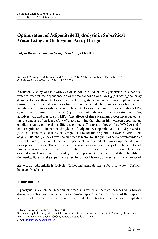摘要
A study of the hydrolysis of adiponitrile (ADN) was performed in subcritical water to research the dependence on experimental conditions. An L-25(5(6)) orthogonal array design (OAD) with six factors at five levels using statistical analysis was employed to optimize the experimental conditions for each product in which the interactions between the variables were temporarily neglected. The six factors were adiponitrile concentration (ADN c, wt%), temperature (T), time (t h), percentage of additives (reactant/additive, wt/wt%), additives (A), and pressure (p, MPa). The effects of these parameters were investigated using the analysis of variance (ANOVA) to determine the relationship between experimental conditions and yield levels of different products. The results showed that (ADN c) and T had a significant influence on the yields of adipamide, adipamic acid, and adipic acid at p < 0.05. Time was the statistically significant factor for the yield of 5-cyanovalermic acid at p < 0.05 and (ADN c) was the significant factor for the yield of 5-cyanovaleramide at p < 0.1. Finally, five supplementary experiments were conducted under optimized conditions predicted by the Taguchi method; the results showed that the yield obtained of each product was no lower than that of the highest in the 25 experiments. Carbon balance was calculated to demonstrate the validity of the experimental technique and the reliability of the results. Based on the experimental results, a possible reaction mechanism was proposed.
- 出版日期2009-2
- 单位华东师范大学
